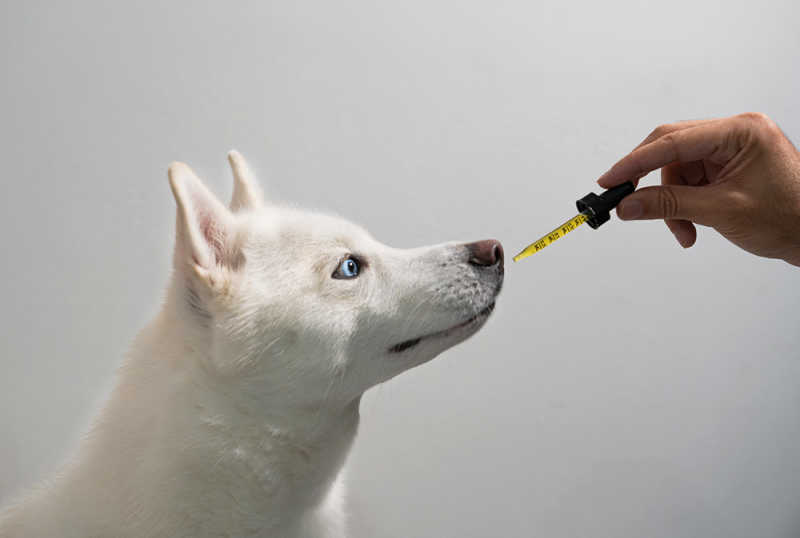
Introduction
Caring for a canine companion means prioritizing their comfort and wellbeing at every life stage. When faced with issues like chronic pain, situational anxiety, or inflammatory conditions, many guardians encounter the option of Dog CBD Oil, a hemp-derived product attracting mounting interest among veterinarians and pet owners alike. Despite the growing discourse, questions remain regarding phytocannabinoid mechanisms, dosage calibration, and risk profiles.
This guide distills the current evidence on Dog CBD Oil, synthesizing peer-reviewed research, clinical observations, and safety data to inform guardians seeking evidence-based interventions for their dogs. Through a structured exploration of benefits, application methods, and risk management, the document aims to furnish pet owners with the knowledge required to make prudent, compassionate choices regarding this therapeutic agent.
What is Canine CBD Oil?
Canine CBD oil is a refined hemp-derived product rich in cannabidiol, a bioactive component of the cannabis sativa plant. Distinct from delta-9-tetrahydrocannabinol, the cannabinoid known for intoxication, CBD produces no euphorigenic effects in either humans or canines. The oil is typically alcohol-free, non-psychotropic, and formulated for veterinary patients, allowing precise dosage in a palatable liquid form that can be delivered orally or incorporated into diet.
Potential Therapeutic Advantages
A growing number of guardians of dogs with various health concerns are integrating canine CBD oil into wellness regimens. The anecdotal and preliminary veterinary evidence suggests several directions of possible support:
- Mitigation of Anxiety and Stress Canines frequently encounter environmental stressors such as thunderstorms, fireworks, and separation. Preliminary surveys and clinical reports indicate that the modulatory effects of CBD upon the endocannabinoid system may attenuate sympathetic arousal and promote a more relaxed behavioral profile.
- Alleviation of Pain and Inflammation Geriatric dogs and those diagnosed with osteoarthritis may endure chronic nociceptive and inflammatory processes affecting joint tissue. Laboratory and clinical investigations have documented the capacity of CBD to downregulate pro-inflammatory cytokines, potentially leading to reduced hyperalgesia and improved mobility.
- Management of Seizure Activity Canine epilepsy, characterized by recurrent, unpredictable seizure episodes, remains a clinical challenge. Controlled studies have demonstrated that CBD can decrease both seizure frequency and severity in affected dogs, an effect that appears dose-dependent and may derive from neuroprotective and anticonvulsant mechanisms.
- Stimulates Appetite and Eases Gastrointestinal Upsets
For pets reluctant to eat or experiencing mild digestive upset, CBD oil can help stimulate appetite and create a calmer gut environment.
- Supports Cardiovascular Wellness
Research suggests CBD may enhance cardiac function—possibly by normalizing blood pressure and fostering a balanced circulatory system.
How to Administer CBD Oil to Dogs
This process is straightforward but should be approached carefully to maximize both safety and therapeutic value.
- Select a Canine-Specific Formulation
Purchase a product specifically marketed for dogs. Formulations for human use may contain flavorings, sweeteners, or carrier oils that can be harmful.
- Determine an Appropriate Dosage
Initiate treatment with a conservative, weight-based dose. Most manufacturers include a dosage chart, but individual responses can vary.
- Deliver It Correctly
CBD oil may be either squirted directly into the dog’s mouth or blended into kibble. For discerning eaters, infusing a soft chew or pill pocket can mask the flavor.
- Observe and Record Reactions
Systematic observation is essential. Any sign of excessive sedation, gastrointestinal discomfort, or other unusual behavior may indicate that the dose should be adjusted.
Is Dog CBD Oil Safe?
Dog CBD oil appears to be safe for most dogs, though several precautions are warranted:
No THC: Select products that are confirmed to be completely THC-free. Even trace amounts can pose health risks to dogs.
Transient Effects: A subset of dogs may exhibit mild sedation or soft stools shortly after CBD is introduced, but these symptoms typically resolve within several days.
Consult Your Veterinarian: If your dog is taking other medications or has chronic health conditions, a veterinarian should be consulted prior to initiating CBD therapy.
Frequently Asked Questions
- Can CBD oil induce a high in dogs?
No, dog-specific CBD oil is formulated to be devoid of THC, meaning it will not produce a psychoactive high.
- How quickly is a response to CBD oil typically observed?
Effects frequently manifest within 30 to 60 minutes following administration. However, for chronic conditions such as osteoarthritis, consistent dosing may be required for several weeks to achieve a noticeable benefit.
- Is it possible to administer an excessive dose of CBD oil to dogs?
CBD has a wide safety margin and is not considered toxic, but excessive amounts can lead to sedation or gastrointestinal upset. Adherence to the dosing guidelines provided by the manufacturer is advisable.
- Is CBD oil lawful for animals?
Yes; provided it is derived from hemp and has a tetrahydrocannabinol (THC) concentration of no more than 0.3%, it complies with regulations in the UK and in many other jurisdictions.
Conclusion
Dog CBD oil may serve as a beneficial nutraceutical for animals experiencing anxiety, musculoskeletal discomfort, seizure activity, and other chronic conditions. Its pharmacological profile is consistent, it has a low adverse-event incidence when dosed properly, and it is available in formats palatable to canines.
When determining whether to introduce CBD into a pet’s regimen, initiate the protocol with a conservative dosage and closely observe behavioral and physiological responses. Select products that are manufactured expressly for veterinary use, such as those available through CBD-UK, and that provide transparent certificate-of-analysis documentation.
Through a firm grasp of the compound’s efficacy, recommended indications, and prudent administration measures, one can optimize the feline or canine companion’s well-being.











